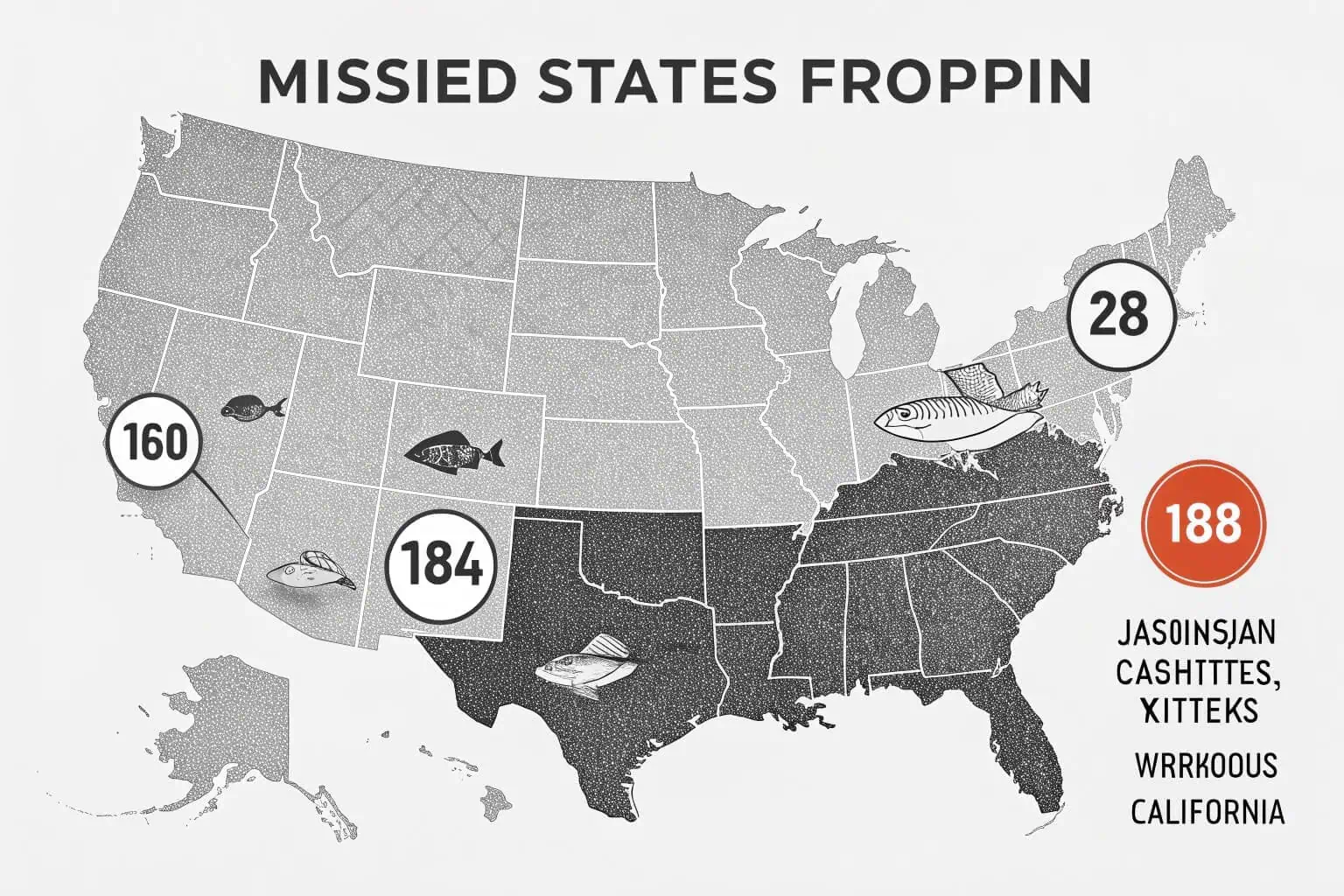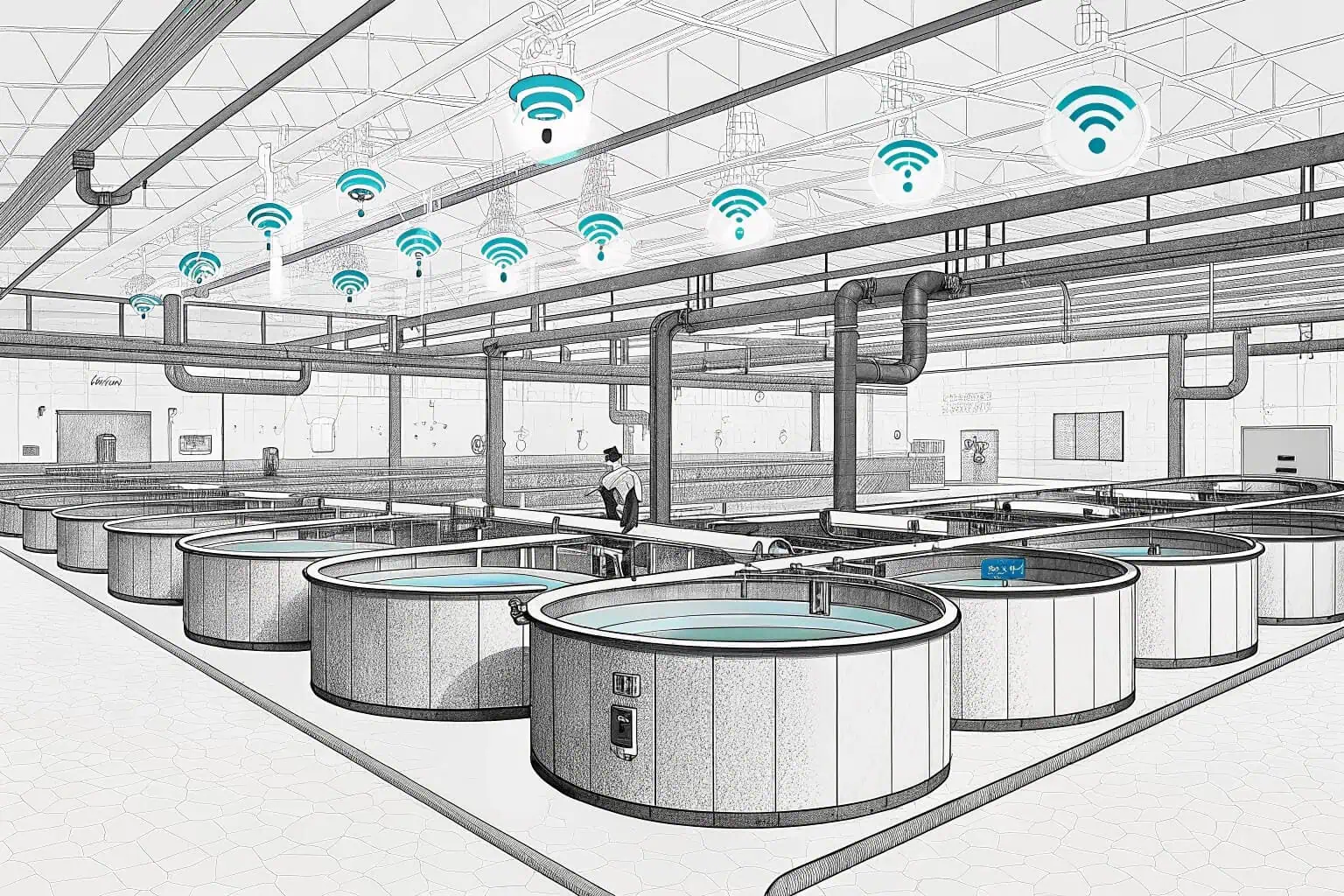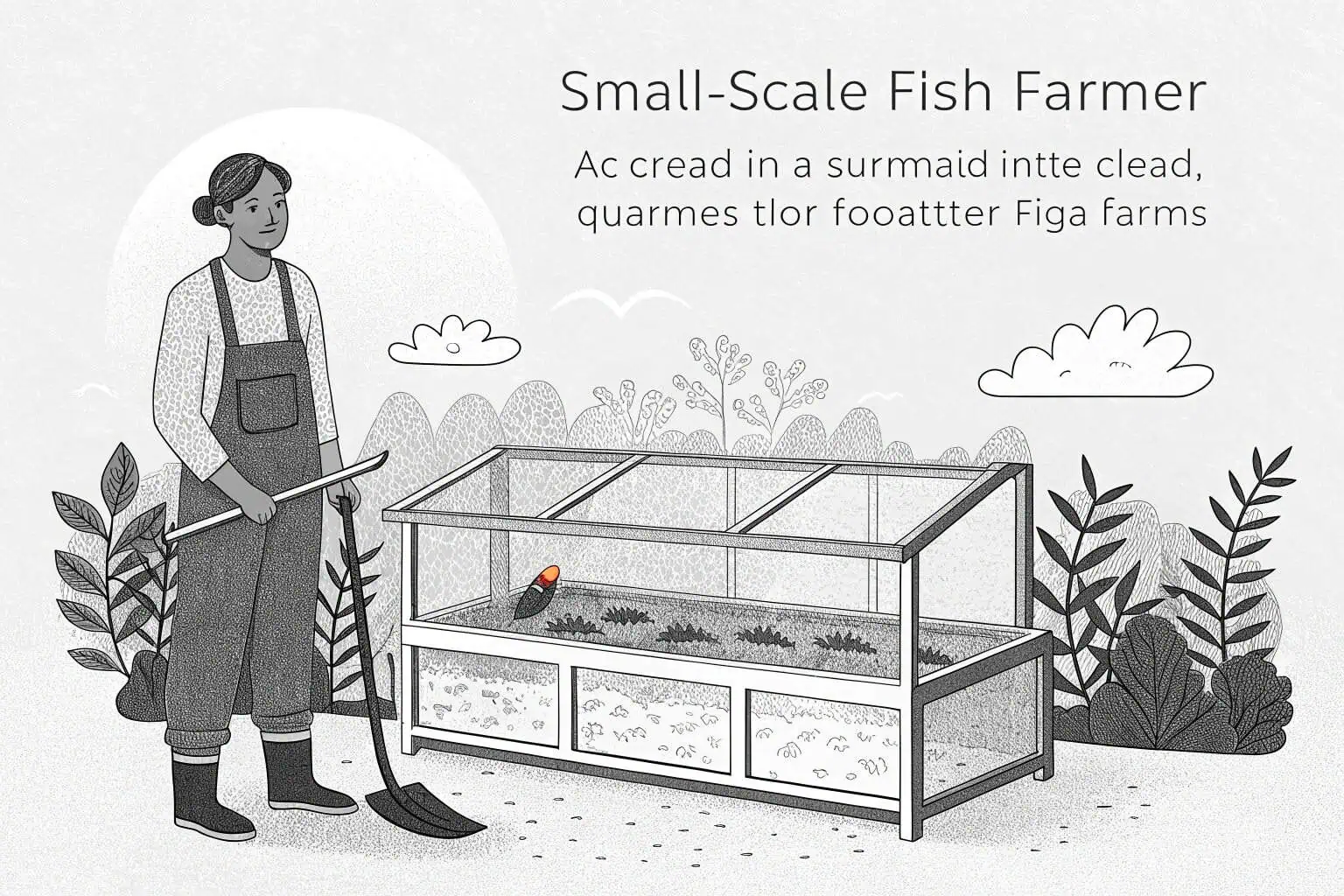Who is the largest aquaculture producer?
Ever wonder who really feeds the world's growing appetite for seafood? Traditional fishing is struggling to keep up, creating a gap that needs a sustainable solution.
China is the world's largest aquaculture producer, dominating the global market with an annual output of over 60 million tons. This massive production comes from both freshwater and marine farming systems, making China the undisputed leader in the industry and shaping the future of global seafood supply.

As someone who has been observing global liquid management solutions, I see aquaculture as more than just a food source; it's the forefront of a sustainable agricultural revolution. China's dominance is impressive, but it also reveals challenges that open doors for innovation. Let's explore who the key players are and what makes them successful.
Which country is the largest producer of aquaculture?
Curious about which nation leads the global fish farming race? The answer might not surprise you, but the scale of their operation and its impact certainly will.
China is by far the largest producer of aquaculture, accounting for over 60% of the world's total volume. Its vast and diverse farming systems, from coastal shrimp farms to inland carp ponds, produce more than 60 million tons of aquatic products annually, feeding its population and the world.

From my perspective as an observer of global liquid management solutions, China's leadership in aquaculture is a double-edged sword. The sheer scale is incredible, but it also brings significant environmental challenges1.
The Engine of Production
China's success comes from its efficient freshwater and marine aquaculture systems2. They have perfected the art of high-density farming for species like carp, tilapia, and shrimp. This massive output, valued in the hundreds of billions of dollars, is a testament to their industrial capacity. However, this intensity has led to problems like water quality degradation and the overuse of antibiotics. This is where I see an opportunity for innovative technologies. For example, using advanced materials for ponds3, like those with double-welded seams, can ensure better containment, reduce leakage, and extend the lifespan of the equipment, which is crucial for sustainable operations.
The Push for Sustainability
The Chinese government is now pushing for greener aquaculture practices. They are encouraging the use of more durable and eco-friendly equipment. This shift is a response to the environmental risks and a move towards long-term viability. For companies like ours, this means a growing market for high-quality, reliable products that support sustainable farming4.
| Aspect | Description | Implication |
|---|---|---|
| Production Scale | Over 60 million tons annually. | Dominates the global market. |
| Environmental Risk | Water pollution and disease outbreaks. | Creates demand for sustainable solutions. |
| Technology Shift | Move towards durable, eco-friendly equipment5. | Opportunity for innovative suppliers. |
What are the top five state producers of aquaculture products?
Beyond the global stage, which US states are making the biggest waves in aquaculture? The answer reveals a story of regional strengths and specialized farming that drives the national industry.
In the United States, the top aquaculture-producing states are Mississippi, Washington, Louisiana, Virginia, and California. These states lead in farming products like catfish, oysters, and crawfish, contributing significantly to the nation's seafood supply and showcasing diverse regional aquaculture systems.

When I look at the U.S. market, I see the importance of a regional strategy6. The top states, like Mississippi and Florida, which account for over half of national sales, show that one size does not fit all.
Catfish and Crawfish Country
Mississippi is the king of catfish farming, while Louisiana leads in crawfish. These states have built their economies around these specific products. Their success depends on having the right equipment for their local climate and conditions. For example, the hot and humid environment in the South requires corrosion-resistant materials7. This is why I believe offering products like galvanized frame fish tanks8 is so important. They provide the durability needed to withstand the elements, ensuring a long-term investment for farmers.
Coastal and Shellfish Champions
On the coasts, states like Washington and Virginia are major players in shellfish farming, particularly oysters. Their success is tied to maintaining pristine water quality9. This highlights the need for reliable containment solutions to prevent any contamination. Customizing products to meet local regulations and environmental needs is key to winning in these markets.
| State | Primary Product | Key Challenge | Solution |
|---|---|---|---|
| Mississippi | Catfish | Hot, humid climate | Corrosion-resistant tanks |
| Louisiana | Crawfish | Water management | Durable pond liners |
| Washington | Oysters | Water quality | Secure containment systems10 |
| Virginia | Clams/Oysters | Coastal environment | Customized equipment |
| California | Oysters/Trout | Diverse climates | Versatile farming solutions |
What are the major aquaculture companies?
Who are the giants of the fish farming world? These companies are not just producing seafood; they are pioneering technologies that are reshaping the entire industry from the ground up.
The major players in the global aquaculture industry include several leading multinational corporations. These giants are not only top producers of salmon, shrimp, and other species but also leaders in innovation, driving the industry towards more sustainable and technologically advanced practices.

I find these large companies fascinating. They are more than just producers; they are technology pioneers11. They are leading the charge from extensive to precision aquaculture, and that's where things get exciting.
The Tech-Driven Transition
These industry leaders are heavily investing in AI-powered monitoring and Recirculating Aquaculture Systems (RAS)12. Their goal is to create a zero-emission, fully sustainable production cycle. This is where I see a perfect fit for our solutions. For instance, our spill containment berms13 can provide secondary protection around tanks, while our biogas storage bags can be integrated into their waste management systems. These products help these giants get closer to their zero-waste goals and enhance their operational safety.
A Partnership for Progress
By providing reliable and innovative equipment, we can become a key partner in their journey. Our ability to customize products means we can create solutions that fit seamlessly into their advanced systems. This synergy between producer and supplier is what will drive the next wave of growth in the industry.
| Company Type | Key Innovation | How We Can Help |
|---|---|---|
| Major Salmon Producers | Smart farming, AI monitoring14 | Custom containment solutions15 |
| Feed & Nutrition Specialists | Sustainable feeds, RAS | Waste management, biogas storage |
| Vertically Integrated Producers | Large-scale integration | Durable and reliable tanks |
Who are the producers of aquaculture?
Who are the people behind the seafood on your plate? From small family farms to large corporations, the producers of aquaculture are a diverse group, each facing unique challenges and opportunities.
Aquaculture producers range from small-scale family farmers in developing nations to large multinational corporations. This diverse group includes fish farmers, hatchery managers, and feed manufacturers, all working together to supply the world with seafood. They are the backbone of this rapidly growing industry.

I understand that the aquaculture industry is facing challenges like climate uncertainty and supply chain disruptions. But I also see tremendous opportunity. Production is expected to grow by 2-3% by 2025, especially in emerging markets like Vietnam and India16.
The Need for Resilience
This growth requires producers to adopt flexible and resilient solutions. This is where products like our collapsible fish tanks17 come in. They are easy to transport and set up, making them ideal for seasonal needs or for quickly scaling up operations. This adaptability is crucial for producers looking to thrive in a changing world.
From Survival to Prosperity
As an advocate for innovation, I firmly believe that by emphasizing customization and reliability, we can help aquaculture producers move from just surviving to truly prospering. Our eco-friendly and compliant products18 can give them the edge they need. By working together, we can build a greener, more efficient global aquaculture ecosystem. The future is not just about feeding the world; it's about doing it in a way that is sustainable for generations to come.
| Producer Type | Key Need | Our Solution |
|---|---|---|
| Small-scale farmers | Affordability, ease of use | Collapsible plastic fish tanks19 |
| Medium-sized farms | Durability, customization | Galvanized pipe/sheet fish tanks20 |
| Large corporations | Sustainability, integration | Custom solutions, biogas/spill systems |
Conclusion
Ultimately, the story of aquaculture production is one of massive scale led by China, but also of regional specialization and corporate innovation. The future belongs to those who can adapt and innovate.
-
This resource will provide insights into the ecological issues linked to aquaculture, crucial for informed discussions on sustainability. ↩
-
Explore this link to understand how these systems contribute to sustainable fish farming and their impact on the environment. ↩
-
Discover how advanced materials can enhance aquaculture practices, ensuring sustainability and efficiency in fish farming. ↩
-
Learn about the positive effects of sustainable farming practices on the environment and local economies. ↩
-
Explore how eco-friendly equipment can enhance sustainability and profitability in aquaculture. ↩
-
Explore this resource to understand how regional strategies can optimize market penetration and sales. ↩
-
Learn about the importance of corrosion-resistant materials in ensuring the longevity and reliability of aquaculture equipment in humid environments. ↩
-
Explore this resource to understand why galvanized frame fish tanks are essential for durability and long-term investment in aquaculture. ↩
-
Explore expert strategies to ensure optimal water conditions for shellfish health and productivity. ↩
-
Learn about innovative containment solutions that safeguard shellfish from environmental hazards. ↩
-
Discover the key players driving technological innovation in aquaculture and their impact on the industry. ↩
-
Explore this link to understand how RAS technology can optimize aquaculture sustainability and efficiency. ↩
-
Learn how spill containment berms can prevent environmental contamination and enhance operational safety in aquaculture facilities. ↩
-
Explore this link to discover how cutting-edge smart farming and AI monitoring can optimize aquaculture operations and boost productivity. ↩
-
Learn how tailored containment solutions can enhance efficiency and sustainability in aquaculture systems. ↩
-
Learn how Vietnam and India are contributing to the expansion of the aquaculture sector worldwide. ↩
-
Explore this resource to understand how collapsible fish tanks can enhance flexibility and efficiency in aquaculture. ↩
-
Explore this resource to discover sustainable products that can give aquaculture producers a competitive edge while supporting environmental responsibility. ↩
-
Explore this resource to understand how collapsible plastic fish tanks can provide affordable and easy-to-use solutions for small-scale farmers. ↩
-
Learn about the advantages of galvanized fish tanks to enhance farm efficiency and tailor solutions for medium-sized farms. ↩